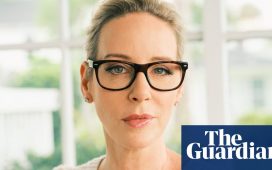A two year-old girl from Glasgow has become the youngest person in the world to undergo brain surgery that doctors say could help limit severe disability among children afflicted by uncontrollable body movements.
Viktoria Kaftanikaite was just 32 months old when she had deep brain stimulation (DBS) to treat a condition called dystonia, which caused her arms and legs to flail about and her mouth to twitch constantly while she was awake.
The rare genetic disorder left her screaming in unbearable pain, stopped her from eating and also affected her ability to breathe. “Viktoria had out of control movements all the time. Her arms and legs wouldn’t move normally and she was pushing her head down and her belly up,” said her mother, Patrycja Majewska.
“We noticed that from a young age she couldn’t hold anything in her hands, such as toys, and had trouble keeping her head up because it was falling from side to side. She wasn’t able to do anything, until now.”
Doctors who treated Viktoria hope the fact that someone so young has been able to cope with deep brain stimulation will lead to it becoming a procedure to help reduce severe muscle spasms in children who have cerebral palsy, have been born prematurely or have suffered an injury at birth.
“In operating on Viktoria our neurosurgeons have broken the sound barrier in neurosurgery, by offering DBS at such a young age,” said Dr Jean-Pierre Lin, the consultant paediatric neurologist for the complex motor disorders service at the Evelina children’s hospital, in London. She was flown there from an intensive care unit in Glasgow, her home city, in May and had the procedure soon after.
“Over the past 15 years we have offered DBS to increasingly young children with dystonia due to minimal brain injury, with the aim of reducing the risk of their bodies being broken by deformity,” said Lin. “We first offered DBS to children over the age of 15, then over the age of 10, then over the age of five, and then to five-year-olds.
“I’ve had a five-year-old boy who has cerebral palsy and deafness who after having DBS was able to walk unaided, which is amazing for someone with cerebral palsy. He later began dancing and became quite athletic,” added Lin, who coordinated Viktoria’s treatment with staff from Evelina children’s hospital, nearby King’s College hospital and Glasgow’s royal hospital for children.
Viktoria’s operation lasted four hours. Patrycja and her partner, Martinas Kaftanikaite, said their daughter’s illness, caused by a rare mutation in the GNA01 gene, meant she was difficult to look after and that they felt helpless, especially as doctors took two years to diagnose her dystonia. About 90,000 people in the UK of all ages have the potentially life-threatening condition, which has a 10% mortality rate. Viktoria would have died without the surgery, Lin said.
The operation involved drilling two holes, each the size of a 5p piece, into the top of the skull, and then implanting two electrodes into an area deep in the brain called the globus pallidus internus, which is targeted in DBS because it harbours what Lin calls “the off switch” that controls the body’s movement. DBS is also used to relieve the symptoms of some people with Parkinson’s disease.
The four contacts on each electrode send fast electrical pulses 130 times a second into the brain, which over time help reduce the person’s uncontrollable movements and, if the procedure works, help them lead a more normal life. The left electrode works on the right-hand side of the body, and the right one does the same on the left. They are powered by a pacemaker-type device, which is inserted into the stomach in a child and near the collarbone in an adult.
Viktoria is now recovering in the ICU in Glasgow. “Her chances of being free from various disabling and painful movements have been greatly improved and she has the possibility – as yet to be mapped – of better future developmental progress,” said Lin.
The youngest patient to undergo DBS before Viktoria was a three-year-old boy who developed intractable, painful dystonia at 18 months. As a result of Viktoria’s case “knowing we can safely deliver DBS at two and a half years means we can relieve suffering and perhaps improve the chances of useful motor recovery to these young children, including some selected forms of cerebral palsy”, said Lin.
There is a debate in neurosurgery about using this form of “neuromodulation” in such young children, because of concerns their skulls are not yet thick enough to tolerate the platform that is put on top of their head to guide the surgeons as they drill and then implant the electrodes.
But for Lin, the fact that a child’s brain is at its maximum plasticity – when it has the most ability to change and reorganise itself – up to the age of five means more very young children, if they are suitable candidates, should have DBS.
“Viktoria’s case is exciting and potentially very significant because it may offer an opportunity for children with early movement disorders to benefit from DBS and have a better future,” he said.














